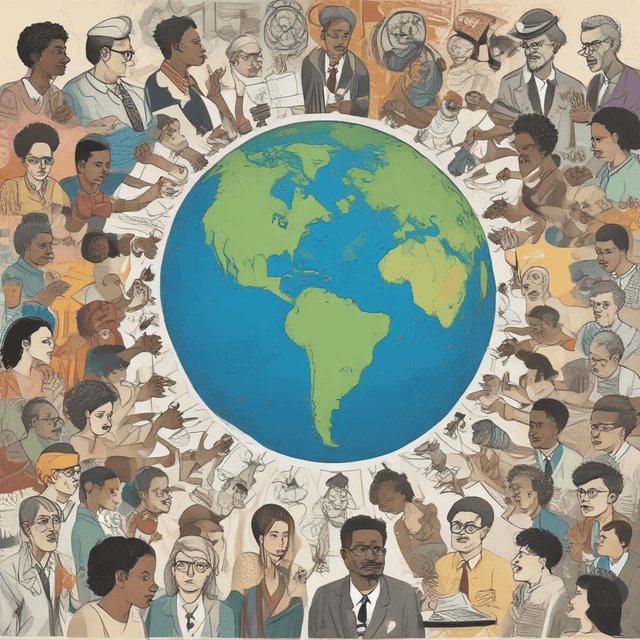
| Key Characteristics | Emphasis on regional cooperation • Strong anti-colonial movements • Varied economic and political trajectories |
| Geopolitical Dynamics | Absence of rigid Cold War divisions led to a more pluralistic global order in the Global South |
| Challenges and Conflicts | Persisted, but without the rigid Cold War dynamic shaping the global landscape |
| Economic and Political Alliances | Diversified range of regional and international partnerships, not defined by non-alignment with superpowers |
In this timeline, the concept of a "Third World" never took hold, as the developing nations of Africa, Asia, and Latin America did not coalesce into a distinct geopolitical bloc defined by their non-alignment with the capitalist and communist superpowers. Instead, the Global South saw a more diversified range of economic and political alliances, with a greater emphasis on regional cooperation and anti-colonial movements.
The process of decolonization that swept across the Global South in the mid-20th century unfolded in a more gradual and fragmented manner, without the rigid superpower competition that defined it in our timeline. While nationalist movements still fought to overthrow European colonial rule, they did not necessarily align themselves with either the United States or the Soviet Union.
Many newly independent states focused on building regional economic and political blocs, such as the Pan-African Union, the Association of Southeast Asian Nations (ASEAN), and the Latin American Integration Association (LAIA). These organizations prioritized economic development, infrastructure integration, and collective bargaining power vis-à-vis the industrialized North, rather than aligning with one ideological camp or the other.
Without the pressure to choose sides in the Cold War, the nations of the Global South experimented with a wider range of economic and political systems. While some pursued state-led industrialization modeled on the Soviet Union, others embraced more market-oriented approaches. Mixed economies, cooperative socialism, and indigenous socialism also emerged as prominent development models in various regions.
This diversity of approaches led to uneven outcomes, with some countries experiencing rapid economic growth while others struggled with poverty and instability. However, the absence of superpower interference and proxy conflicts allowed many states to chart their own courses, free from the threat of external military intervention or regime change.
Despite the lack of a bipolar geopolitical framework, the Global South was not immune to conflicts and crises. Regional rivalries, ethnic tensions, and resources disputes continued to flare up, sometimes escalating into armed clashes or civil wars. However, without the overlay of superpower competition, these conflicts tended to be more localized and less prone to internationalization.
The Congo Crisis, the Indo-Pakistani Wars, and the Biafran War are examples of regional conflicts that erupted and unfolded in this timeline, but without the direct involvement and manipulation of the United States and Soviet Union. While still devastating for the affected populations, these crises did not have the same global reverberations as the proxy wars that defined our world's history.
The absence of a rigid bipolar division between capitalism and communism, combined with the more diverse trajectories of decolonization, gave rise to a more pluralistic global order in this timeline. Power and influence were distributed across a larger number of influential actors, including regional blocs, multinational corporations, and non-aligned movements.
This multipolar world was characterized by a greater degree of economic interdependence, cultural exchange, and diplomatic cooperation among the nations of the Global South. While conflicts and challenges persisted, the lack of superpower rivalry allowed for more nuanced negotiations, innovative solutions, and the development of new international institutions that better reflected the realities of the post-colonial era.